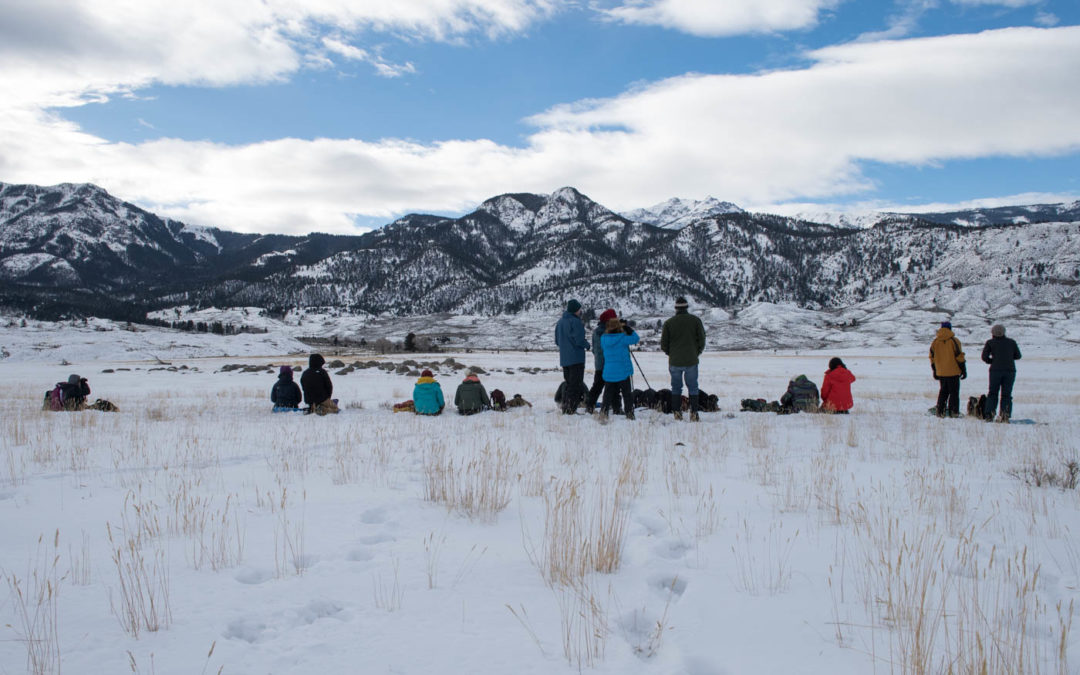Excerpt from Built for Speed:
North America’s fastest mammal, the pronghorn can accelerate explosively from a standing start to a top speed of 60 miles per hour—but it can also cruise at 45 miles per hour for many miles. What accounts for the speed of this extraordinary animal, a denizen of the American outback, and what can be observed of this creature’s way of life? And what is it like to be a field biologist dedicating twenty years to studying this species?
Our field class was fortunate enough to spend a day and night with John Byers, Professor of Zoology at the University of Idaho, to get the inside scoop on some of these questions. Byers spent the past twenty years studying pronghorn antelope and “argues that these mystifying behaviors evolved in response to the dangerous predators with whom pronghorn shared their grassland home for nearly four million years: among them fleet hyenas, lions, and cheetahs. Although these predators died out ten thousand years ago, pronghorn still behave as if they were present—as if they were living with the ghosts of predators past” (from American Pronghorn).
Before heading out to Gardiner Basin to track down a group of pronghorn, Byers provided a thorough overview of behavioral sampling so the students would be able to collect data on the animals. Pronghorn tend to be very nervous, flighty animals, so collecting data can be challenging.
The students would pair up and practice two types of sampling: focal animal sampling, and scan sampling. One person observes, the other records data. For focal sampling, the students would choose one individual animal, and will observe and record data on only that one animal and no others. For scan sampling, each student pair would record the behavior of all the individuals in a group throughout predetermined time intervals. Common winter activities generally consist of reclined statures, standing still, moving (walking or running), or eating.
Byers also let us know a few easy ways to distinguish males from females. Females have tiny horns, which range from being barely visible nubs to just a few inches long. Males have much longer horns, tend to be larger than the females, and also have a small triangular shaped patch of black fur on their jaw below the eye.
We returned back to the Buffalo Ranch around the time our next speaker arrived. Jim Halfpenny is an author, scientist, educator whose interest in COLD (altitudinal, latitudinal, and seasonal) has taken him to all seven continents and Greenland. Jim’s specialties include environmental ecology, animal tracking, and carnivores; his greatest academic love, bears, led to 20 years studying black, grizzly and polar bears. He also works with wolverine, lynx, cougar and wolves, however our time with Halfpenny would be centered around winter ecology and bioenergetics.
Earlier that morning, the teaching team went out to dig two different piles of snow that would be dug out into “quinzhees,” which are hollowed-out snow shelters. We let the piles firm up all day, and that evening went back over to the snow mounds to construct the quinzhees. Once the quinzhees were ready for prime time, Dr. Halfpenny gave us the scoop on his experiment.
Two students would be sleeping inside each quinzhee for the night with just a tarp, sleeping pads, and their sleeping bags. One of those lucky volunteers would be rigged up with four different thermometers to do an energy budget. The question we’d be looking to answer: How many Snickers bars did you eat to burn out there to stay warm? Typically the answer would be about one Snickers bar for the night, but each person reacts differently.
Our volunteer, Dylan, worked with Dr. Halfpenny to determine the appropriate body and gear measurements before heading out to his cozy quinzhee for the night. In the morning, the class would reconvene and see how Dylan and our three other volunteers fared in their snow shelters…









